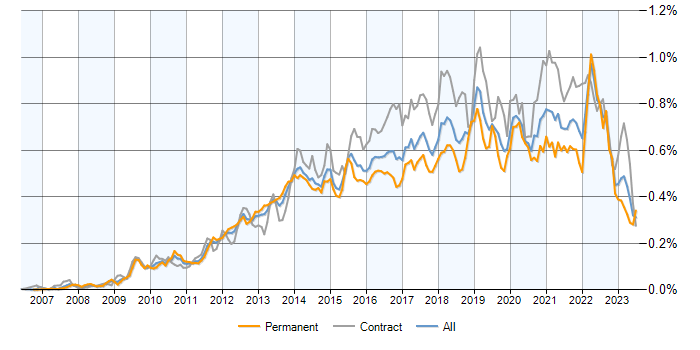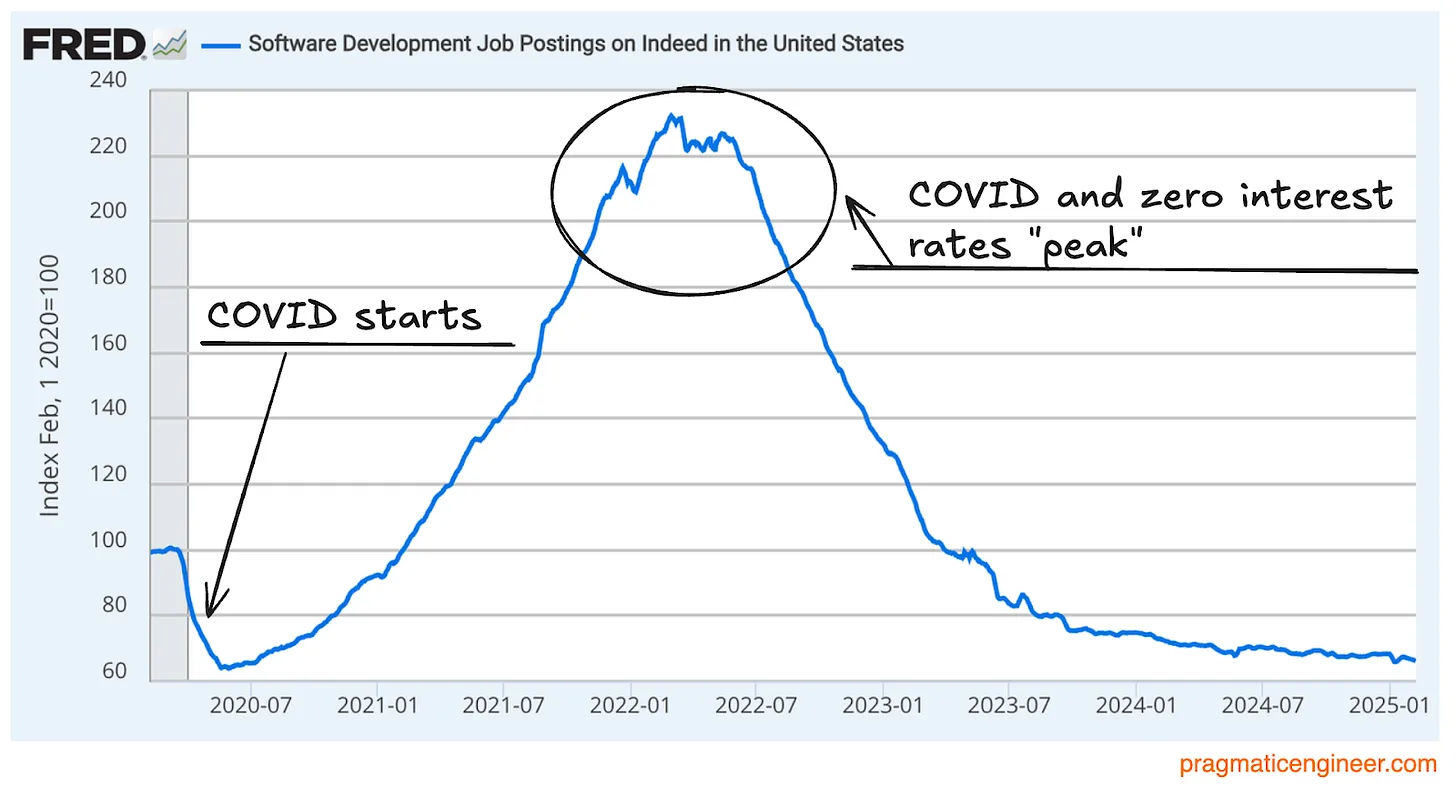It's been interesting reading the multiple opinions on how UX (User Experience) is in crisis, and I felt somewhat compelled to touch on the subject in this fledgling personal blog. No matter where you look in the world, the sense of crisis seems global—not just for UX.
On one hand, there are voices that justify this UX crisis, whether because of its own shortcomings, a mix of external factors, or the way the market has shaped this profession over the past 20 years. On the other, there's a more positive view of the situation, focused on the future evolution of UX.
Arguments for the "Death" of UX
Those who talk about a deep crisis—or even the end—of UX often point to several issues:
-
Low barriers to entry: The proliferation of quick courses and bootcamps spawned a wave of "UX designers" who, many times, lacked the deep skills needed to manage complex projects. Anyone could claim the UX title, as the entry barriers were minimal.
-
Loss of trust: This mix of profiles—with outcomes ranging from highly experienced professionals to those fresh out of bootcamps—led many employers to lose faith in the real value a UX role could offer.
-
Design as a "non-essential" expense: Historically, in times of economic crisis, design and user experience are among the first areas to face cuts, seen as "non-essential" to the immediate survival of the business.
-
Commoditization of UX: The emergence of countless templates, frameworks, and No-Code tools has replaced a significant portion of the work previously done by a UX professional, turning certain tasks into a commodity.
The Context: The Correction of the Tech Market
At the end of 2022, a marked trend of layoffs began at major tech companies—the so-called FAANG (Facebook/Meta, Apple, Amazon, Netflix, Google/Alphabet)—after the huge hiring boom that followed the COVID-19 pandemic. The market began a process of correction.
In 2023, there was an abrupt drop in UX job opportunities worldwide after years of accelerated growth. According to an analysis by UX Magazine, vacancies for UX designers fell by 71% between 2022 and 2023, and for UX researchers by 73%. This was accompanied by over 3,000 designers being laid off just at FAANG companies, which generated great unease among professionals, with many feeling that "the sky was falling" for digital design.
In mature markets like the United Kingdom, job postings with the title "UX Designer" retreated to 2013 levels, practically erasing a decade of growth.
 Chart–Percentage of job postings in the UK with the title "UX Designer" (2007-2023). After a peak in 2021-2022, demand dropped drastically to 2013 levels.
Chart–Percentage of job postings in the UK with the title "UX Designer" (2007-2023). After a peak in 2021-2022, demand dropped drastically to 2013 levels.
The entire IT industry has undergone a major "correction." An excellent post by Gergely Orosz outlines some key data on how the U.S. labor market has evolved from the onset of COVID until now. It's important to note that his data comes from software development job listings aggregated/published on Indeed, so it doesn't represent the entire market, but it shows a clear trend.

The change in the number of listings in 2025, compared to 2020, for each of these areas:
- All jobs: +10%
- Banking and finance: -7%
- Sales: -8%
- Marketing: -19%
- Software development: -34%
Hospitality and tourism openings are also down by 18%.
Overall, software developer jobs have seen the biggest boom and bust in vacancies. No other segment saw hiring more than double in 2022; only banking came close. At the same time, hiring has fallen faster in software development in the last 2-3 years than anywhere else.

Overall, several macro factors help explain this "correction":
- The initial impact of COVID on tech companies' mass hiring strategies.
- Interest rates remaining near zero for a time, significantly influencing the economy and the employment dynamics of large corporations.
- In the subsequent contraction phase, the growing impact of LLMs (Large Language Models) on programming and design jobs.
- Examples like Bluesky and Linear, which run businesses with millions of users (over 30 million with Bluesky) with engineering teams of fewer than 30 people, showcasing a new operational efficiency.
(I highly recommend reading the post "Software engineering job openings hit five-year low?" on pragmaticengineer.com for further insight.)
Arguments for the Evolution of UX
In contrast to the pessimistic view, others argue that we're witnessing a necessary transformation:
- What is "dead" is a narrow view of UX, limited to the interface (UI) or to delivering visually appealing artifacts without strategic impact.
- Towards a holistic view: As proposed by the Nielsen Norman Group, UX should evolve into a more comprehensive understanding of the experience throughout the entire customer journey, integrating more with CX (Customer Experience).
- Opportunity for strategic integration: Along these lines, now is the time for UX to evolve and integrate more with business strategy. There's talk of a strategic vision "UX is dead, long live UX" and of a UX/CX merger.
In the current crisis, I believe UX has merely exposed the problems it has carried since its inception. The discipline's ability to reinvent itself will be key to justifying its future relevance.
Personally, I have a deep affection for UX. I leaped from a purely technical role as a web developer into UX back in 2016. It wasn't something planned; it happened naturally as I became increasingly involved in user experience research projects.
At first, I loved things like that direct contact with users. Talking with them and uncovering their actual problems and opinions was a tremendous gift that broadened my perspective on crucial topics such as accessibility (Yes, it's not enough for your AA checklist and a bot to pass a test).
But there were also aspects of UX that I found completely unproductive. The discipline had created a kind of ritual of processes and methodologies which, although sometimes effective, were often the very reason projects dragged on unnecessarily.
The Impact of AI
Now, with generative AI, it's possible to resolve many of the subtasks that used to take so much time: audio transcription, video processing, rapid prototyping, and wireframes. We can now complete tasks that once took weeks in mere minutes. The leap in productivity has been immense, and this inevitably changes the landscape. You no longer need 5 UX Researchers processing information on an extensive research project; a single professional can handle everything (if they master the new tools).
Towards a UX + Business + Strategy
The vision of a UX role that starts from strategy and business isn't new; it was already being discussed before COVID. One of the major challenges has always been aligning clients/stakeholders with this vision. If it was already difficult to persuade stakeholders with data to change their web or app strategy, tackling broader business and product/service strategy will require much more negotiation and collaboration across different areas of the organization. The challenge is not simple, and I see it as even less feasible in companies or institutions not prepared or aligned for interventions of this magnitude.
I believe that after the crisis, there will still be a market for the more "minimalist" or execution-focused UX. However, little by little we will see the emergence of a UX profile we might call "Full Stack", one that tries to incorporate CX and a business perspective into its professional offering.
I just coined the term "UX Full Stack". At Duolingo, they came up with the term "Product Experience" because their corporate culture centers on the product and the term UX seemed outdated to them. My continued use of Duolingo speaks for itself; I wouldn't stick with it if I didn't find it helpful. It wasn't the app that experienced something; it was me. Anyway, the discussion about the name is the least important thing now.
The problem with this "Full Stack" vision isn't so much the technical ability to carry it out (given the leap in productivity with LLM, No-Code, and design platforms), but rather the management aspect. The challenge for the UX consultant or "UX Full Stack" will manage many counterparts and interests within organizations that are often ill-prepared for such collaborative work.
Be Water, My Friend
Generative AI, AI agents, No-Code platforms, and a world in crisis are going to force UX –and other professions in the software industry–to evolve and adapt. UX must once again justify its relevance within companies.
We will probably see consulting or in-house teams that include commercial and marketing specialists working side by side with designers and researchers. While ideal timing may have been years ago, genuine progress frequently emerges from times of crisis.
In the long run, the industry will eventually emerge from this phase of contraction. I am convinced there will continue to be room both for the specialist UX and for a broader, more strategic UX. However, I fear we will hardly ever experience the boom that this profession enjoyed in the last decade again. That "golden age" of UX, it seems, is now history.
My plan is to write about UX at least once a week (🤞🏼). I'll cover various topics, from current industry trends and the job market to key concepts I want to document on this blog as a reference.
